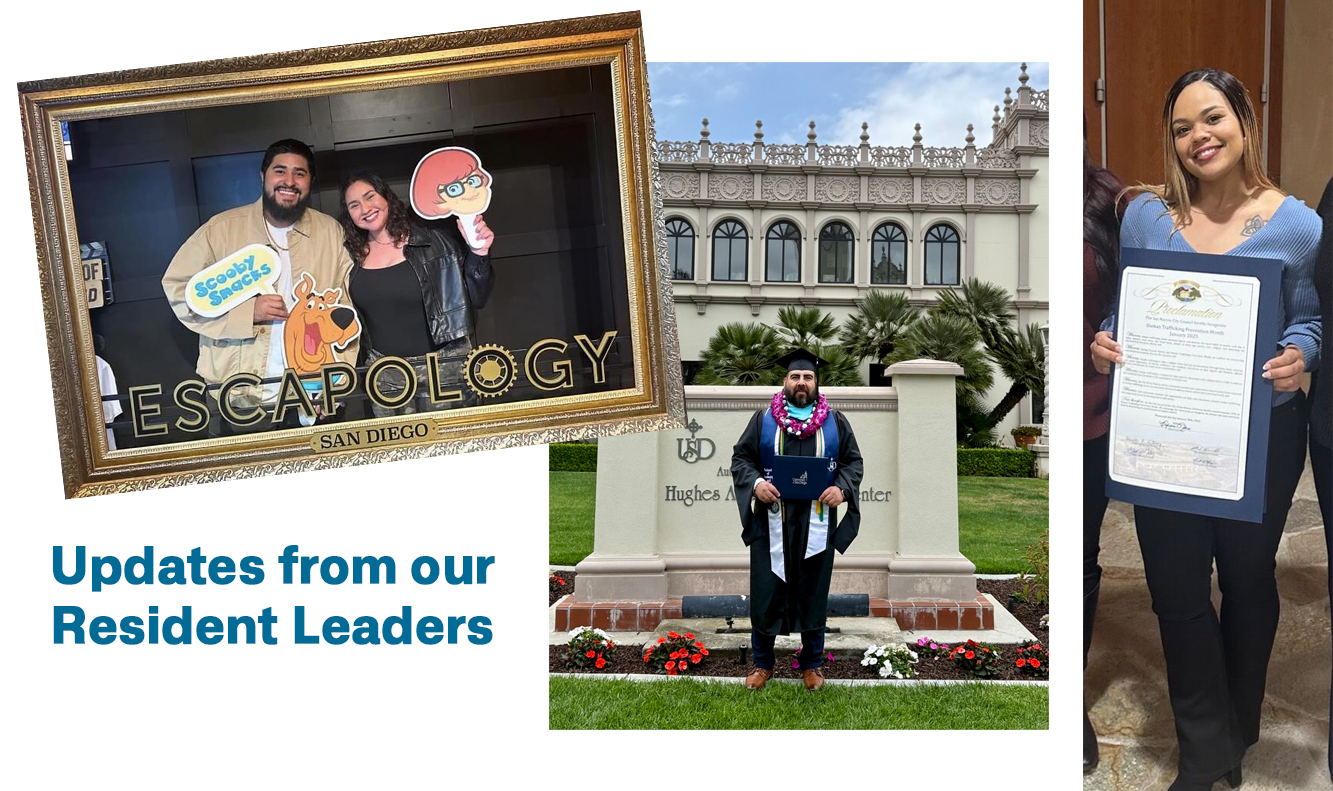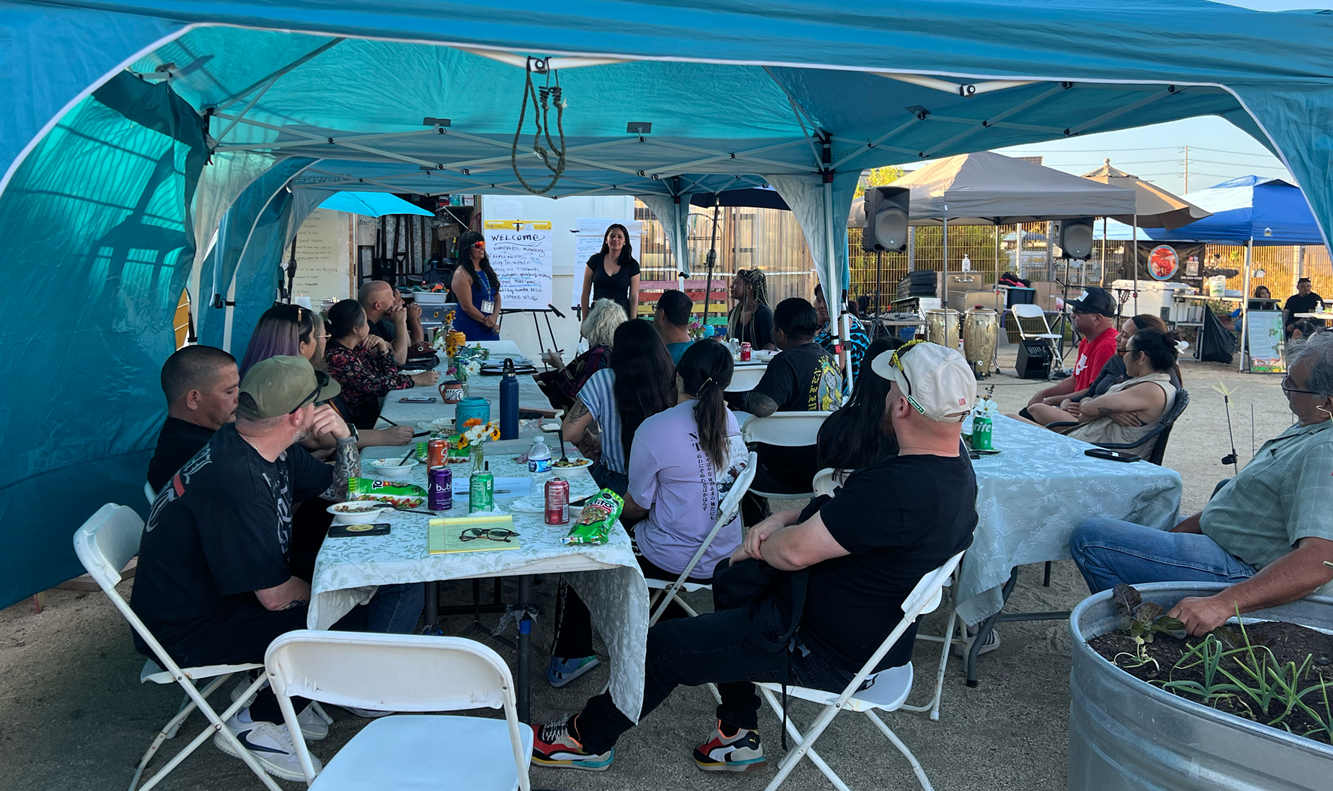May 29, 2024
Homeownership for the “Missing Middle”
Meet Mayisha and David. They are a hard-working, middle-income couple who has recently bought their first home and moved into the Hilltop-Encanto development called The Crossings. They were able to purchase the home with help from a first-time homebuyer-assistance program supported by AHF and a collaborative of funders and developers.
Click here to watch their interview.
“When you’re middle-income…. (you) get no breaks ever,” Mayisha
It’s no secret that San Diego is struggling to meet regional housing demands as large swaths of the population are spending more than 50% of their income on rent. While there are programs that seek to increase the supply of affordable rental housing, the gap between subsidized rental housing and increasingly expensive market-rate housing is significant. Sometimes referred to as the “missing middle,” there are few sustainable housing options for middle-income families. Even more rare are homeownership opportunities, given San Diego’s rapidly escalating median home prices.
For Mayisha and David, Hilltop Crossing was a perfect fit. Developed by Ito Girard & Associates, Hilltop Crossing offers 47 single family homes intentionally serving families earning 100-150% of the median household income. In addition, the developer team dedicated $500k in homebuyer assistance grants to reduce barriers for first-time homebuyers to be able to purchase their home. Some of the homebuyers also qualify for additional grants and reduced-cost loans. Of the 30 units already sold in Hilltop Crossing, 29 of them are first-time homebuyers, most of whom are local to the surrounding area.
The goal is to help families build intergenerational wealth through homeownership.
Alliance, along with Mission Driven Finance and BQuest Foundation, made an impact investment to support the development of Hilltop Encanto. “We applaud the focus on first-time homebuyers, and the developer’s commitment of time, talent and treasure to support middle-income families in their efforts to build intergenerational wealth” said Sarah Lyman, AHF Executive Director. “It’s exciting to see real families like David and Mayisha move into their homes with instant equity that will grow overtime and hopefully serve as a long-term asset for their future.”
The homebuyer assistance program includes help with covering closing costs and down-payment assistance, along with workshops for new homebuyers to learn about financing, bank programs, and what it means to be a homeowner.
Why does AHF invest in affordable and middle-income housing?
Housing and shelter are among the top social determinants for health and well-being.
San Diego suffers a massive shortage of affordable housing for low- and middle-income households. It’s estimated that we need over 130,000 units of new affordable housing to meet the current demand.
Lack of affordable housing causes financial stress for low-to middle-income households, who may already struggle to pay for other necessities like food, healthcare, and education, leading to debt, poverty and even homelessness.
We are proud of the Hilltop Crossing development and grateful for the expertise provided by all the partners involved. We hope to see more projects like this one that can fulfill the dreams of homeowners like Mayisha and David.
This and other projects are part of our impact investing strategy. By leveraging our funding portfolio beyond traditional grantmaking in pursuit of generating greater social return, we have committed to investing 10% of our endowment to impact investments. Contact us if you are seeking an impact investment and are aligned with our mission.
Want to learn more?
What are the benefits of “missing middle” housing as a building type?
“Missing middle” housing, including duplexes, fourplexes, townhomes, and small apartment buildings, offers several benefits. It increases density in a way that fits well within existing neighborhoods, bridging the gap between single-family homes and large apartment complexes. This housing type promotes diversity and affordability, catering to various household sizes and income levels, and fostering inclusive communities.
Why is it called “missing middle” housing?
The term “missing middle” housing describes housing types that lie between single-family homes and large apartment complexes in size and density. Examples include duplexes, triplexes, fourplexes, bungalow courts, and townhouses. These housing forms were once common but have become rare due to zoning laws and development trends favoring either single-family homes or large-scale apartments. Consequently, this type of housing is “missing” from many communities. Additionally, it addresses the needs of middle-income earners, who earn too much to qualify for housing subsidies but too little to afford market-rate housing.
Addressing persistent barriers to affordable housing
As long as California’s high costs of construction and land continues, there will be a lack of affordable housing.
Our focus is on closing racial equity gaps. These gaps are prevalent in the housing category.
Even though the practice of redlining (lending discrimination) in mortgage lending practices was banned in 1963 with the passing of the Fair Housing Act, the damage was done. From generation to generation, low and middle-income families of color and immigrants have been priced out of more affluent communities.
# # #
Related News

Jul 16, 2025
Resident Leader Spotlights
Celebrating Our Resident Leaders’ Accomplishments We want to take a [...]

Jul 2, 2025
i2 Finalists Announced
Alliance Healthcare Foundation Selects 5 Finalists to Advance to Phase [...]

Jun 12, 2025
Planning for Uncertain Future
Planning for an Uncertain Future: How AHF and Our Partners [...]

